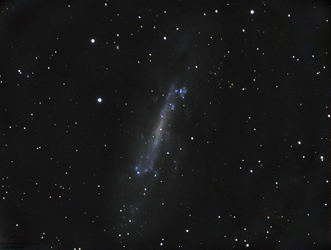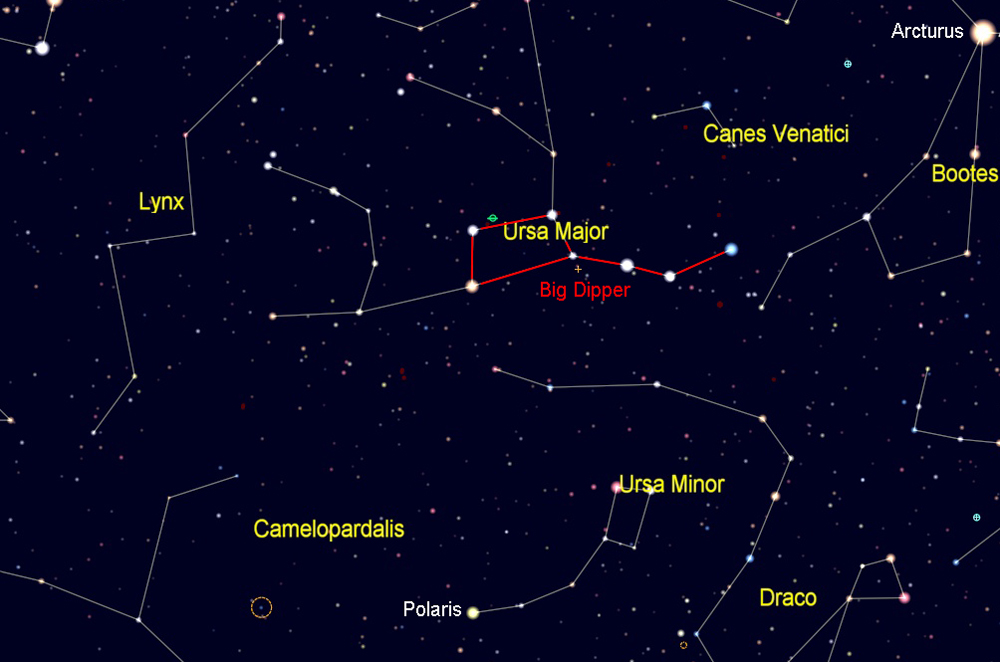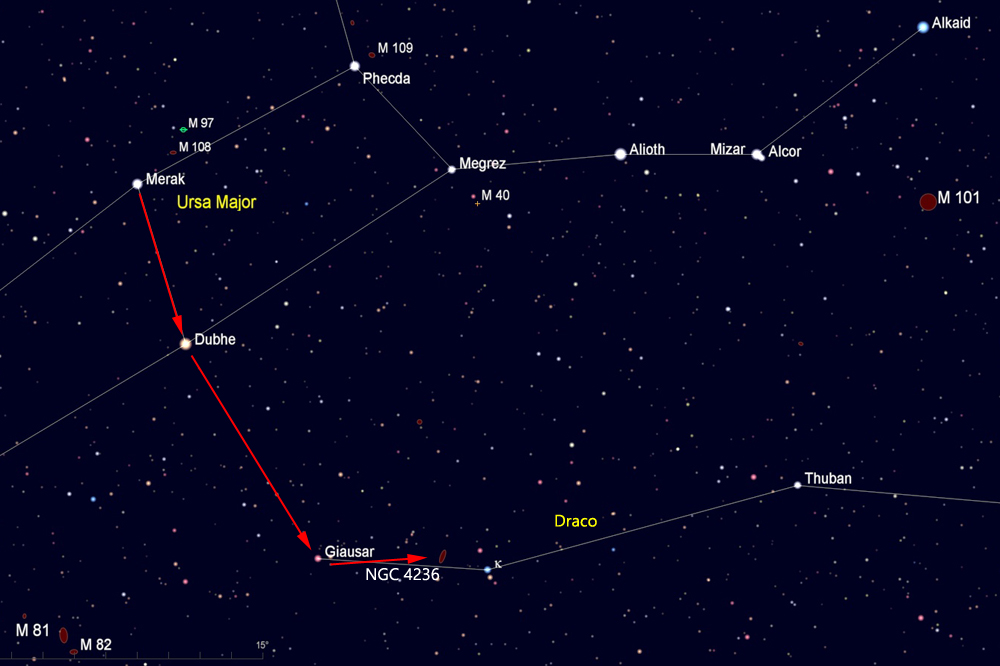
Start by finding the Big Dipper, one of the most recognizable star patterns in the sky. It is part of the constellation Ursa Major, the big bear. It is shown here upside down, high in the sky above Polaris, which is where it can be found during the evenings in spring and summer. For other seasons and times of night, rotate the chart as needed to match what you see in the northern sky.

The stars Merak and Dubhe in the bowl of the Big Dipper are called the "pointers" because they point to the North Star, but they also point (more or less) to the closer 4th magnitude star Giausar at the tip of the tail of Draco, the dragon. As shown below, the next star in Draco's tail is Kappa (κ) Draconis, about 5 degrees away. About 3/4 of the distance from Giausar to Kappa is the galaxy NGC 4236. Be sure to use a wide-field eyepiece to try to spot its dim oblong glow.
